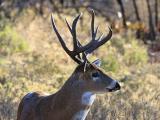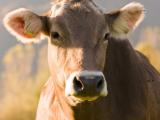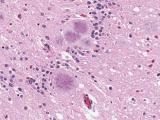Dec 21, 2006 (CIDRAP News) Government investigators were unable to determine where Canada's latest cow infected with bovine spongiform encephalopathy (BSE) was born, making it impossible to tell how the animal was exposed to the disease or find other cows that might have been exposed, the Canadian government said this week.
The case, first reported Aug 23, was in an Alberta beef cow estimated to be between 8 and 10 years old, the Canadian Food Inspection Agency (CFIA) said in a Dec 18 report.
About a week before its death, the Charolais crossbred cow showed neurologic signs including ataxia and tremors and became nonambulatory. The producer treated the cow for milk fever before it died. Though the postmortem examination revealed the likely cause of death was peritonitis, the case met criteria for Canadas national BSE surveillance program, and samples were obtained for testing.
Investigators found that the cow was not born at the farm but was part of a herd assembled in 2001 and was purchased within the previous 5 years. The farms records didnt conclusively document a transaction for the cow, which could have occurred before rules requiring identification of transported animals took effect.
Of 56 possible farm origins, investigators ruled out 43 on the basis of the cows profile and the farms management practices. Investigators couldnt determine which of the 13 remaining farms the cow was from, so they were unable to trace its herd mates or locate potential sources of contaminated feed. The CFIA said more than 90% of cows aged 8 to 10 years have already left the cattle population.
The BSE agent was present in limited instances in northern Alberta from 1996 to 1998, which includes the estimated first year of the animal's life, when it was most susceptible to the disease, the CFIA said. The cow would have been born and exposed before Canada's 1997 ban on feeding cattle protein to cattle or during the early stages of implementation, when contaminated material could have remained on farms and at feed mills.
Five of Canadas BSE cases have occurred in 2006, from a total of 8 since May 2003. In three of the 2006 cases, the cows were born after the 1997 feed ban became effective.
In July, Canada announced plans to extend a ban on potentially infective cattle parts (specified risk materials) to all animal feeds, not just feed for ruminants.
See also:
Dec 18 CFIA investigation report

















